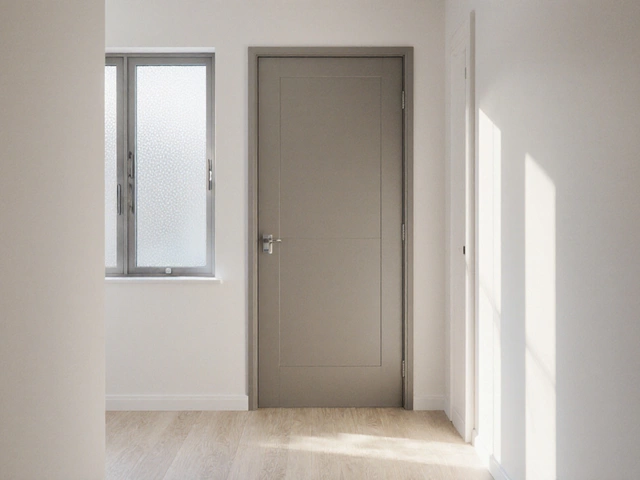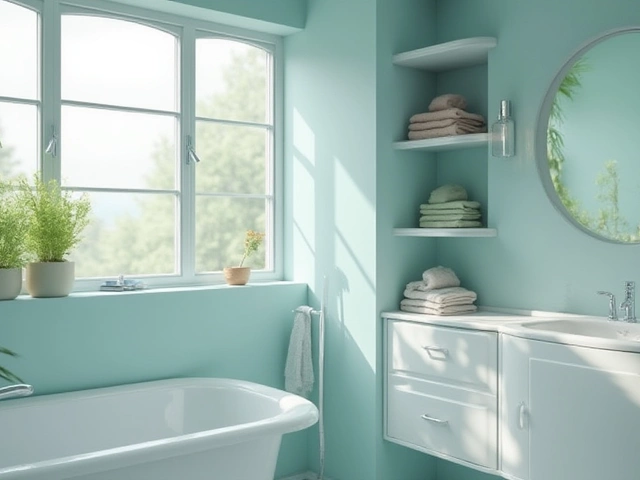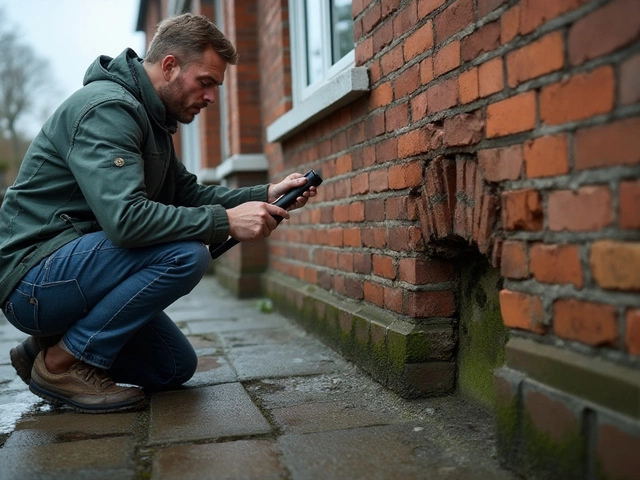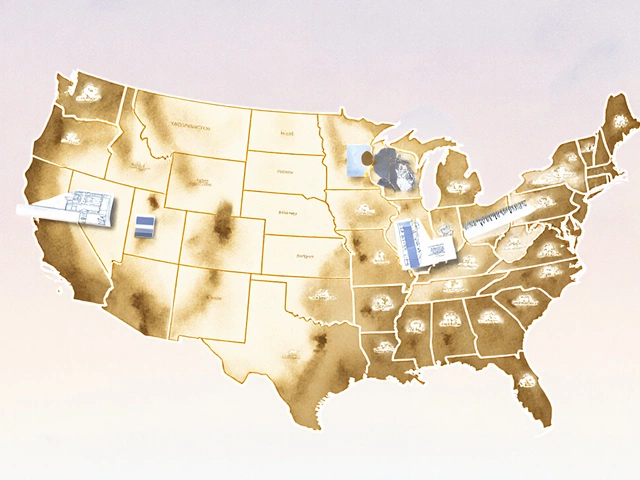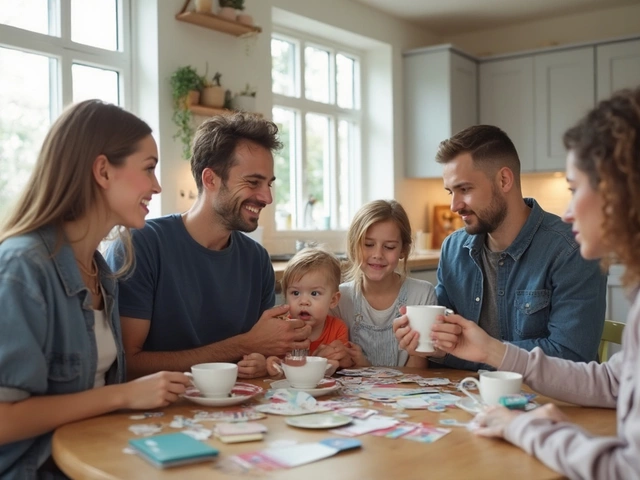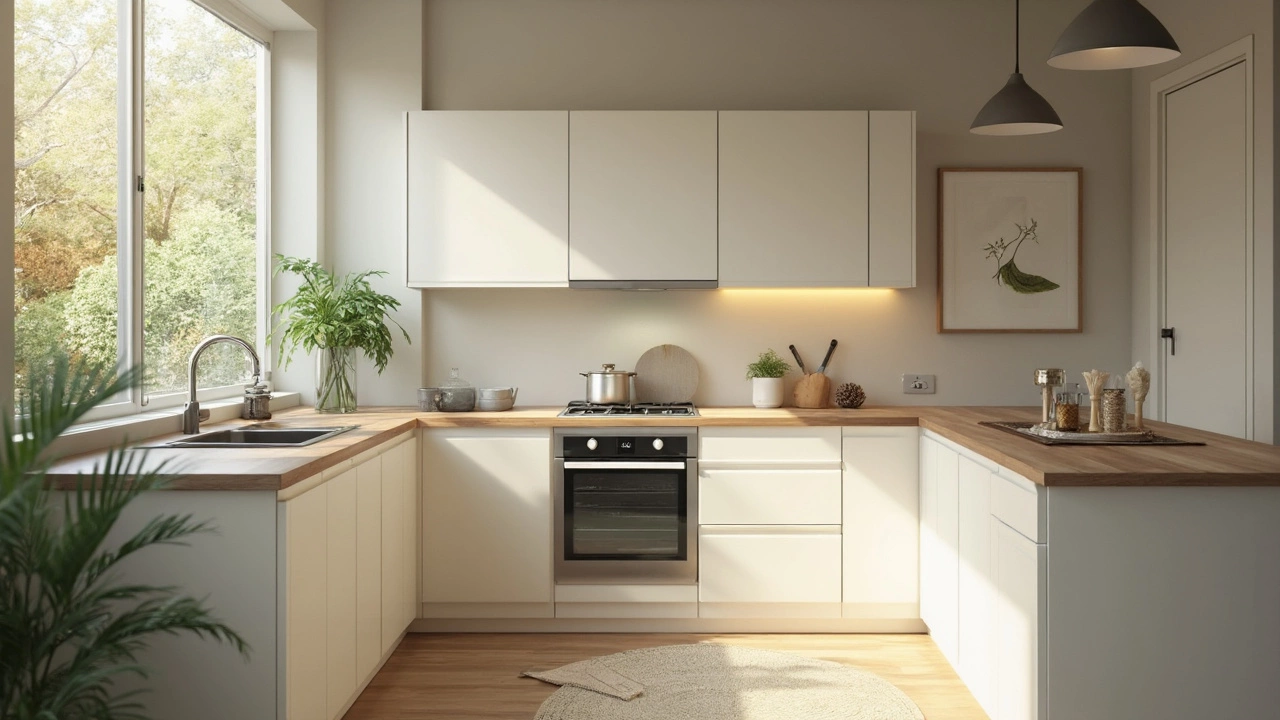
Ever stood in your kitchen, baffled about where to put the stove? You're not alone. The placement of the stove can spark quite the debate, especially when it comes to popping it right next to the sink. Is this a genius way to save space, or a culinary catastrophe waiting to happen? Let's see what works and what doesn't.
First off, let's break down the pros and cons. Having the stove next to the sink can seriously streamline your cooking process. Imagine not having to take those extra steps between rinsing your veggies and tossing them in the pan. Convenience at its best, right? But, it's not all sunshine and rainbows. Splashes from the sink could pose safety risks with the stove, and let's face it, nobody wants a soggy mess on their hands.
Speaking of safety, that's where things get real. It's crucial to consider the potential hazards of this setup. Water and heat aren't the best of friends, so keeping things dry and safe is key. But hang on, we're not done. There's also the magical kitchen triangle—a design principle that’s all about efficiency between the stove, sink, and fridge. How does shoving the stove next to the sink fit into this equation? It's something to ponder!
- Pros and Cons
- Safety Concerns
- Efficiency and Workflow
- Design Aesthetics
- Space and Clearance Tips
- Real-life Examples
Pros and Cons
Alright, let's break down the juicy details of sticking that stove next to the sink. Like most things in life, there are ups and downs, and knowing both sides can help you make a smart choice for your kitchen design.
Pros:
- Convenience: Having the stove near the sink means less walking back and forth. It's all about efficiency when it comes to prepping and cooking meals.
- Space Saver: In smaller kitchens, tight layouts might make it necessary to pair the two together. It can help in maximizing counter space elsewhere.
- Simplified Cleanup: With the sink right there, you can wash the dishes and utensils as you go. Less clutter means less stress.
Cons:
- Safety Concerns: A famous kitchen designer once said,
"Water and heat should not be next-door neighbors; accidents tend to happen this way."
Wet surfaces around a stove can lead to slips, and nobody wants to deal with that. - Limited Workspace: A stove and sink being so close might mean less countertop space to work on. If you're someone who enjoys spreading out ingredients and tools, it could cramp your style.
- Ventilation Challenges: With the sink and stove being close, steam from both might lead to poor air circulation, making the kitchen feel warmer and less comfortable.
For those pondering the setup, here's a quick glance at some data from kitchen surveys:
| Setup Type | Preference (%) |
|---|---|
| Stove Next to Sink | 30% |
| Separated by Counter Space | 70% |
Despite the mixed reviews, whether or not this arrangement suits you really boils down to how you use your kitchen and your cooking habits. A bit of planning and weighing the pros and cons makes all the difference!
Safety Concerns
Alright, let's chat about safety. Having a stove right next to the sink can be a convenience, but there are some things you definitely need to think about to keep your kitchen both practical and safe.
First and foremost, water and electrical appliances are not the best mix. The proximity of water can lead to potential electrical hazards if your stove has electrical components. A bit of splash from washing dishes or filling a pot can easily hit those buttons or controls, causing malfunctions or even electrical shock. That's something no one wants to deal with while cooking up a storm.
Then there's the issue of heat. Stoves get hot—a no-brainer, right? Heat can warp or damage sink materials if they're too close. Also, if the stove is gas, there's always a concern about flames catching on any flammable items nearby. You want to avoid any soaps, towels, or cleaning materials being too close to the open flame.
Some safety guidelines suggest maintaining a clearance of at least 24 inches between the stove and sink center points. Adequate spacing helps avoid these risks by reducing the chances of water splashes and heat damage.
Here's a quick checklist to help keep things in check:
- Ensure all electrical components are shielded from water splashes.
- Keep flammable materials far from the stove's reach.
- Install splash guards, if necessary, to prevent water from reaching electrical areas of the stove.
- Regularly inspect stove and sink areas for signs of heat damage or water damage.
Taking these precautions can keep your kitchen design both stylish and safe. So, as you plan out your space, keep these pointers in mind to avoid any unwanted surprises down the line.
Efficiency and Workflow
So, you've got your kitchen designed, and you’re eyeing that spot right next to the sink for your stove. But how will it affect your kitchen's efficiency and workflow? Spoiler alert: it could be a game-changer.
The idea of placing your stove near the sink can make your cooking routine incredibly streamlined. In a lot of kitchens, the stove, sink, and fridge create what's called the kitchen work triangle. This concept aims to make prep work, cooking, and cleanup a smooth process by minimizing movement between these crucial areas. When your stove is right next to your sink, it reduces the time and effort spent moving around. You're cutting down on steps, which means less time rushing between tasks and more time enjoying those freshly cooked meals.
Now, let’s talk practical efficiency. Picture yourself draining pasta into a colander with one hand while reaching for the sauce with the other. When your kitchen layout includes the stove and sink side by side, it almost feels like having an extra set of hands. Plus, it can help keep the cooking area less cluttered since you can easily wash up as you go. Who doesn't love a tidy counter?
However, not every kitchen task involves just the stove and sink. You still have to think about all the other elements that play a part in your culinary adventures. If your fridge ends up being way across the room, you might be negating some of that newfound efficiency. Remember, the aim is to keep everything within just a few steps of each other.
Wondering what others are doing? Many home chefs opt for a small buffer space, like a countertop section between the sink and the stove. This maintains a smooth workflow while offering a space to prep food away from water splashes and heat.
| Kitchen Element | Ideal Distance |
|---|---|
| Stove - Sink | 20 - 30 inches |
| Stove - Fridge | 4 - 9 feet |
| Sink - Fridge | 4 - 9 feet |
In a nutshell, placing your stove next to your sink can boost your kitchen’s efficiency and make your work more enjoyable, but it’s all about balance. Take into account other appliances' proximity and ensure everything is within arm's reach without cramping your style. That's the sweet spot you're aiming for.
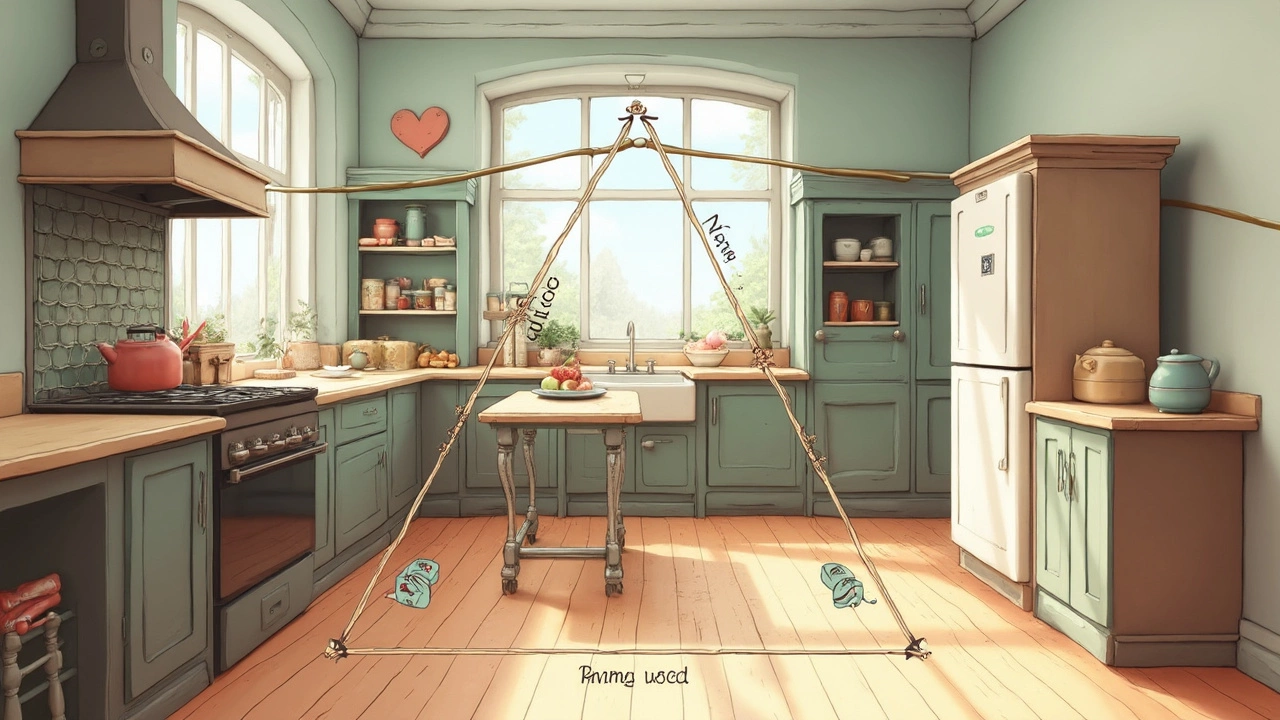
Design Aesthetics
When it comes to kitchen design, aesthetics carry a lot of weight. It's not just about making your kitchen look Instagram-worthy, but also about creating a space that feels harmonious and comfortable to work in. Having a stove next to a sink can change the vibe of your kitchen, for better or worse, depending on how you play it.
First, let's think about the visual flow. Kitchen appliances can either break or make the continuity of your countertops. Aligning your stove placement next to the sink might create a streamlined look, especially if you use matching materials and colors. This continuity can make your kitchen feel more spacious and less cluttered, which is a win if you're dealing with a smaller area.
Then there's symmetry. To achieve balance, consider how your kitchen layout looks from different angles. Are there design elements such as cabinetry or shelving that mirror each other? If you're going for a minimalist style, keeping the stove and sink close without too many design frills can maintain that sleek, uncluttered aesthetic.
Deciding on the backsplash can be a game-changer, too. You can use it as an opportunity to tie your sink-stove combo together. Why not install a durable, easy-to-clean material like subway tiles? They look classic and can handle the splashes from the sink. Just make sure you seal everything well to keep moisture from sneaking in.
For those who love data, a study by Houzz showed that 34% of homeowners opt for a modern design in their kitchens, highlighting the trend of sleek and functional spaces. Whether you're a fan of cutting-edge trends or classic vibes, it's about finding what makes your cooking experience more enjoyable and less of a chore.
Avoid overcrowding the area with too many gadgets or elements. Keep the area around the sink and stove open. If you're a gadget geek, store them in cabinets or drawers nearby. This way, your kitchen maintains its stylish appearance while still being the hub of culinary creativity it’s meant to be.
Ultimately, how you live should inform your kitchen design—it's not just about what looks good, but what feels good to you. Weave in your personal style with these tips, and you'll end up with a kitchen layout that's not just aesthetically pleasing but also uniquely yours.
Space and Clearance Tips
Alright, you're thinking about putting your stove next to the sink, but you're worried about space and clearance? You're on the right track. Making sure everything fits just right is crucial, especially in kitchen design. Let's break this down so you can get it right the first time.
First things first—there's a rule of thumb to keep in mind: ensure you have at least 15 inches of counter space on each side of your stove. It's not just for aesthetics but for safety too. Picture yourself juggling pots, pans, and groceries. You don't want to run out of place to put them down. And hey, did you know that having some space also helps in managing spills? A splash guard might save your day, but a bit of extra space never hurts.
When it comes to the clearance between your stove and sink, give around 24 inches wherever possible. It's like creating safe zones where your cooking and cleaning stations are well defined. This tip comes straight from kitchen experts who have seen their fair share of mishaps. As one design consultant puts it,
"A thoughtfully placed stove can transform cooking from a chore to a real pleasure."
Let's not forget about ventilation. Stoves need breathing room, both above and to the sides. Make sure there’s enough clearance so your exhaust hood does its job properly. You don't want last night's fish to haunt the kitchen, do you?
If you’re working with a smaller kitchen, don’t worry. You can still make this kitchen layout work with some tweaks. Consider compact appliances or even alternative placements like an island stove. Sometimes a bit of creative rearrangement creates a cozy, efficient cooking spot.
Now, get the measuring tape out and make those adjustments that bring efficiency and style to your cooking area. Designing isn't just about following rules; it's about creating a practical space that works just for you.
Real-life Examples
So, is the stove next to the sink really a good idea? Let's check out some real kitchens. Picture this: a small apartment in San Francisco. The owner, Jen, opted for a compact kitchen layout due to limited space. She placed the stove right next to the sink. For her, it made meal-prep a breeze, especially with the tiny countertop space she had. Sounds perfect? Well, almost! Jen mentioned that she had to be extra cautious with water splashes. Installing a splash guard made a world of difference, keeping things tidy and safe.
Then there's Danny, living in a house in the suburbs. He had a dream of a sprawling kitchen with every mod con. But when it came time to remodel, he noticed the benefits of placing the sink a bit closer to the stove. Danny didn't stick them side by side but kept a small prep area in between. This way, he avoided the main concerns of direct proximity while enjoying the convenience of a short distance.
In a modern Tokyo apartment, where space is a luxury, Hiroki had no choice but to place his stove and sink side by side. Here, the efficiency is crucial. Daily routines involved quick and efficient meals. Hiroki found that placing a thin barrier between the two helped maintain separation and safety, while maximizing the existing space.
So, what's the takeaway? Whether it's due to space restrictions or personal preference, everyone has their own unique setup. The key here is to adapt based on your personal kitchen dynamics. With some clever tweaks and safety measures, placing a stove next to the sink can work well in lots of different scenarios. Just make sure it aligns with your kitchen workflow and safety needs!
